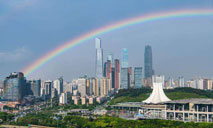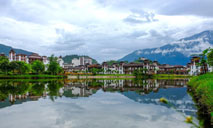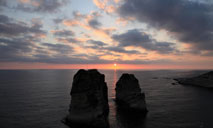Australian seed vault breeds hope for preserving biodiversity
SYDNEY, May 21 (Xinhua) -- About 60 kilometres southwest from Sydney's central business district, locates the Australian PlantBank with a huge seed and tissue culture collections.
Facing the International Day for Biological Diversity, researchers of the seed vault hope their work would bring more hope for conservation of biodiversity.
"Here at the PlantBank, our focus is wild native seeds from across Australia, particularly species in New South Wales (NSW). Our main focus at the moment is the threatened species. Here is the main repository for NSW threatened species seed," said Dr. Peter Cuneo, manager of the Seedbank and Restoration Research of the Royal Botanic Gardens and Domain Trust.
Australia is home to more than 25,000 plant species. Land clearing, agriculture, habitat fragmentation, the spread of non-native invasive species, and climate change impose continuing pressures on the biodiversity. To collect, research and store seeds of different plants provides an insurance policy against extinction of native plants in the wild.
Cuneo told Xinhua that researchers need to go out into the wild, gather the data on the location including the habitat, the flower colour, the seed, the soil, record all the ecological information available into database, and collect seeds.
The seeds will be sorted and dried in a drying room under a temperature of 15 degrees centigrade and 15 percent relative humidity for about four weeks at least.
Then they will be processed, put into hermetically sealed foil packets and stored into the Seed Vault under the temperature of minus 20 degrees centigrade for long term storage. The researchers will also take a sub sample of the seeds for germination tests.
Research staff at the Seed Vault, Dr Justin Collette told Xinhua the germination test is very important, which will help people know how to make use of these previous storage.
"The elements are changing as the climate is changing. To use the seeds that we have in storage here, we need to know how to germinate them. So we investigate what elements lead to the best germination for those species," Collette said.
"To germinate, the seed needs moisture from the environment. It also needs certain temperatures. Some types of seeds need smoke, some need different light regimes, some need to be physically disturbed, like getting eaten and cracked, opening the seed coat. These are all things that we can sort of simulate in the lab to try and get them to germinate."
Cuneo said every 10 years researchers will pull the seed collection out and germinate some more just to make sure that they are still viable, that the viability is not declining over time.
With more than 11,000 individual collections and over 5,300 species, the PlantBank has played an important role in re-establishing threatened species and scientific research.
"We also use the seeds for restoring natural areas here at the Australian Botanic Garden Mount Annan, where we've cleared major weed problems re-establishing local woodland habitat. The seeds are also used in threatened species programs to establish new populations in the wild," Cuneo said.
There are over 400 threatened species being held in the seed vault, and these collections were used to establish 10 threatened species into wild locations.
"We have requests from around the world with people looking for and wanting to research particular seeds. So we would find seeds for that. A lot of this work is done through our partnerships such as the Millennium Seed Bank in the UK," Cuneo said.
Besides seeds, the PlantBank also culture and bank tissues for plants that are not suitable for seed banking or plants that don't produce seeds. However, there are still some "desiccation sensitive" plants that cannot be dried down and stored, such as rainforest trees, which need further research on preservation and highlight the importance of protecting natural areas.
"There is no doubt that we are continuing to lose forest cover worldwide. The loss of biodiversity is globally significant. In many cases, forest can be cleared before you even know what species are there," said Cuneo.
"There are really unique animals in Australia, but they rely on the native plants and habitats to survive. So we really need to preserve those natural areas and national parks, have those well reserved areas and look after them."
The PlantBank offers a few programs, such as educational experiences to school and tertiary students, providing training for conservation professionals in Australia and overseas, and hosting workshops to share expertise in seed conservation and translocation.
Cuneo also encouraged people to engage in protection of environment and biodiversity from their daily life.
"I always say to people, conservation always starts in your local area, if you can volunteer and help your local council preserve and maintain bushland and natural areas by joining bush care groups. If you've got an existing forest like we have here, you can get rid of the weeds. So if you can preserve your local habitat, that's a really positive thing for biodiversity," he said.
Photos
Related Stories
- Crop seed company in E China’s Shandong province devoted to breeding high-quality seeds to benefit farmers
- China to consolidate foundation for seed industry
- China gives insurance subsidies to major grain crops' seed production
- Agricultural college sends out seeds in admission letters
- China considers regulating international cooperation in seed industries
Copyright © 2021 People's Daily Online. All Rights Reserved.










